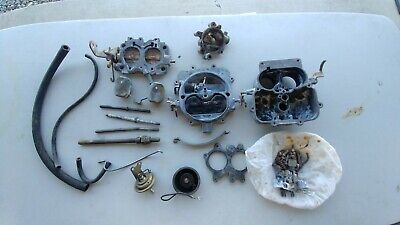If you really look at the FSM, you'll probably find there's a maximum of 4 different carb numbers with the Carter BBD. Look up all the carb kits for each of those numbers and I'll bet that they all list the same rebuild kit.
One other thing... When asking for anything tech, put the year, make, model, engine size and whatever else in your first post. I looked at this when you posted and probably like others, decided not to respond since it makes the task harder and usually doesn't give the correct answers. I read through this thread and can't help but think that it could have been answered pretty easily without all the speculation.
The only info I see here is it's a 1968. I'm going to assume it's a Plymouth. Looking at the pics, I can see no distributor in the rear, so I can assume it's a 383. Same pic shows the throttle linkage to the trans, so it's an automatic. So, 1968 383 2bbl Carter BBD with an automatic and if it's not a Plymouth, the Dodge and Chrysler are probably the same carb numbers.
Plymouth FSM shows BBD-4423S I don't have a '68 Dodge or Chrysler FSM to cross check. That shows two carbs, one being an auto and one being a stick. Other models could be for California or possibly Canada, but in this Plymouth FSM, there is really only one carb listed.
View attachment 639158






















